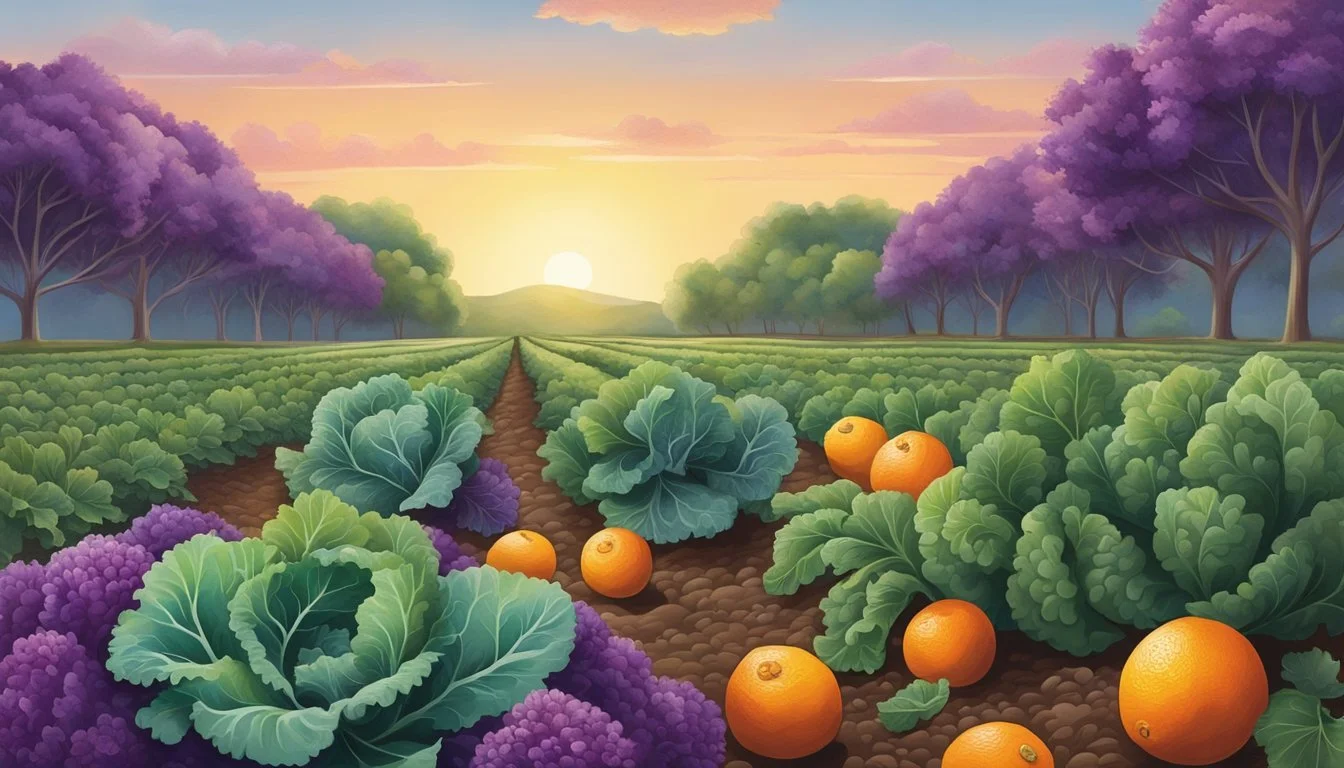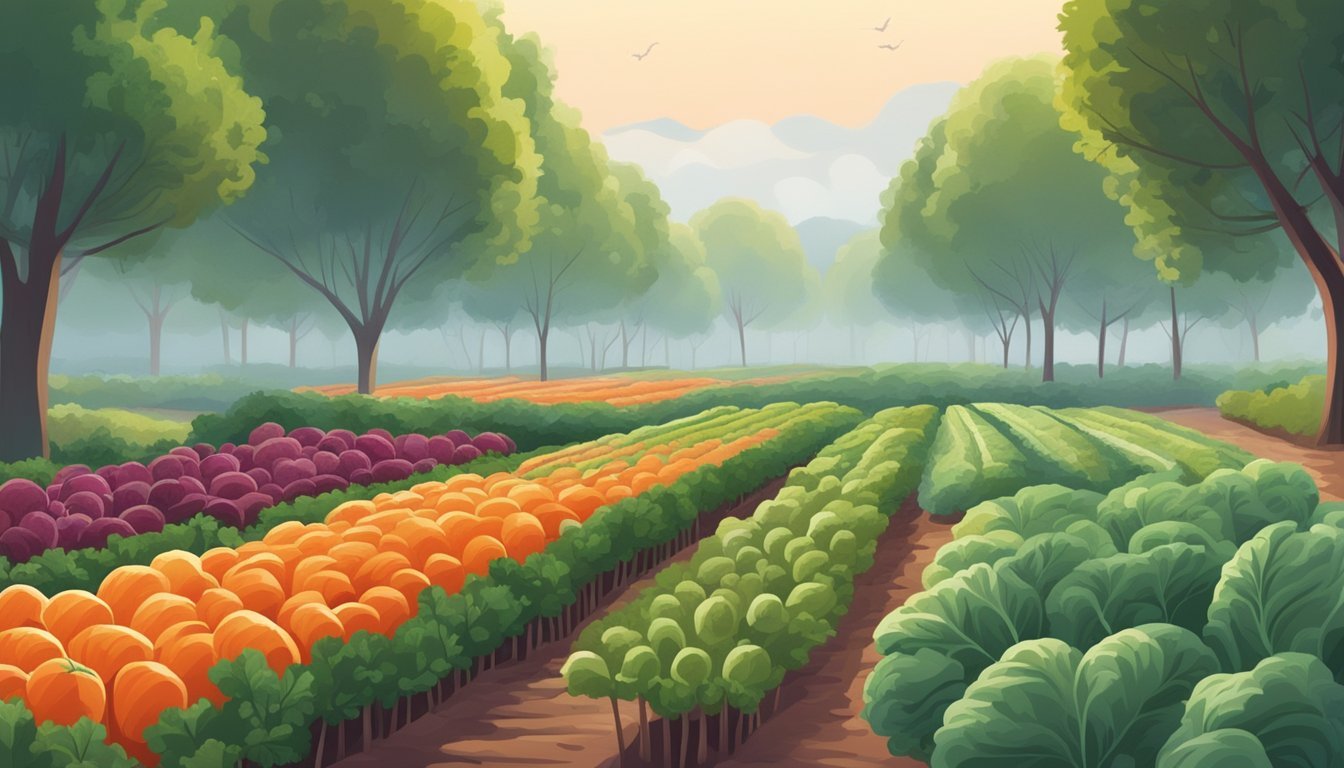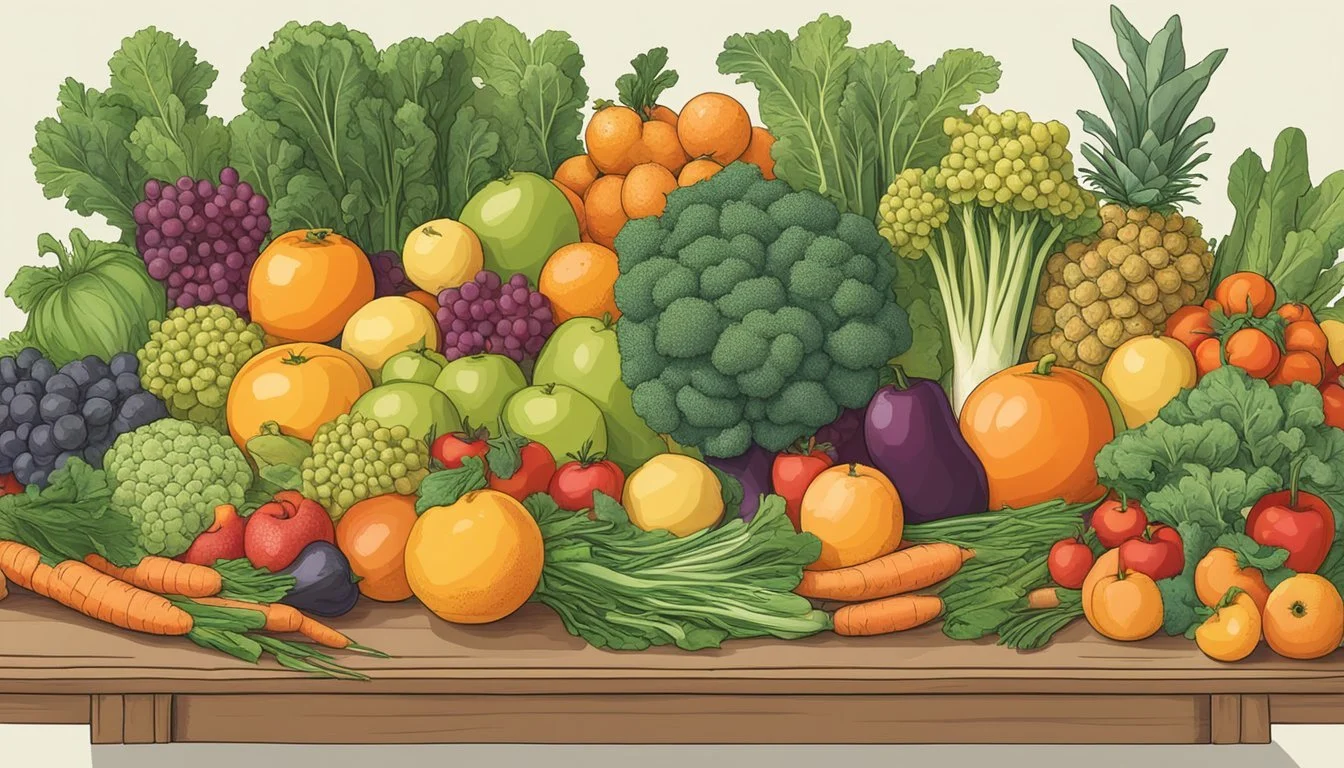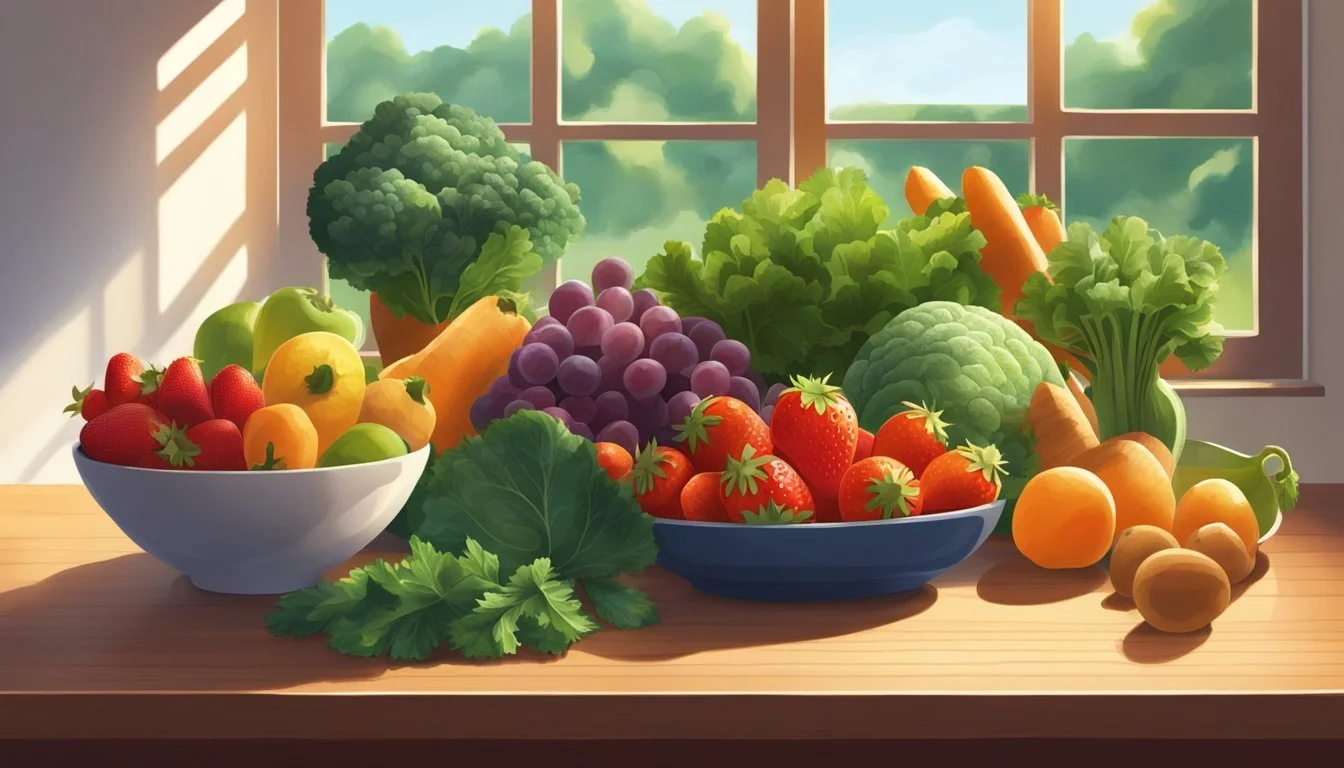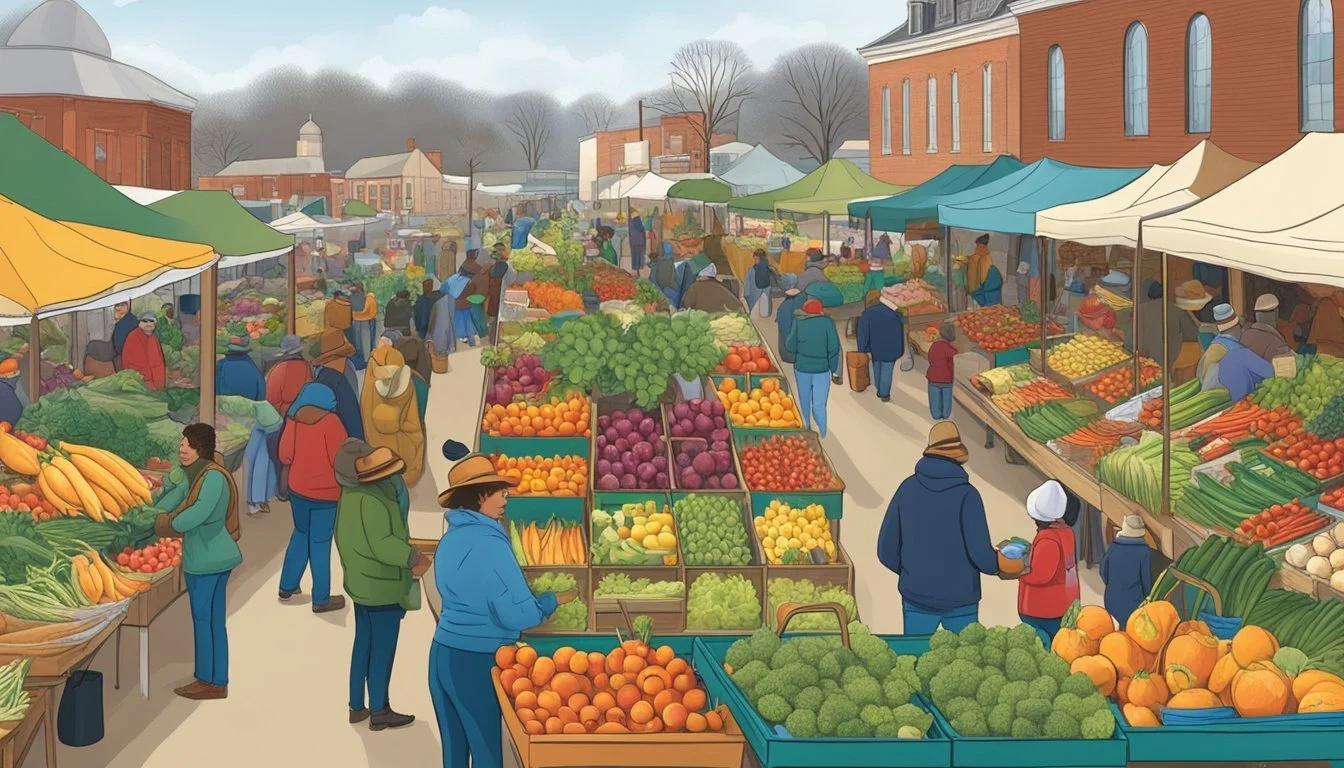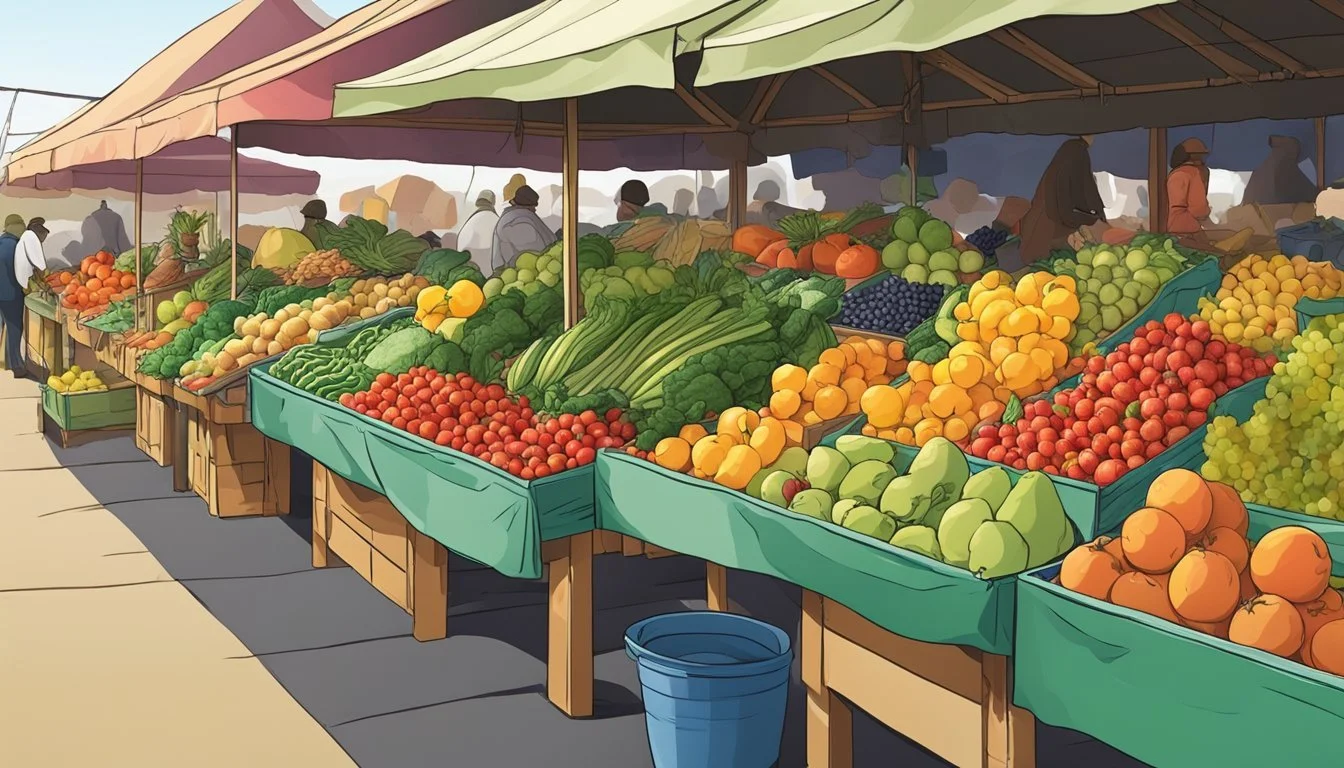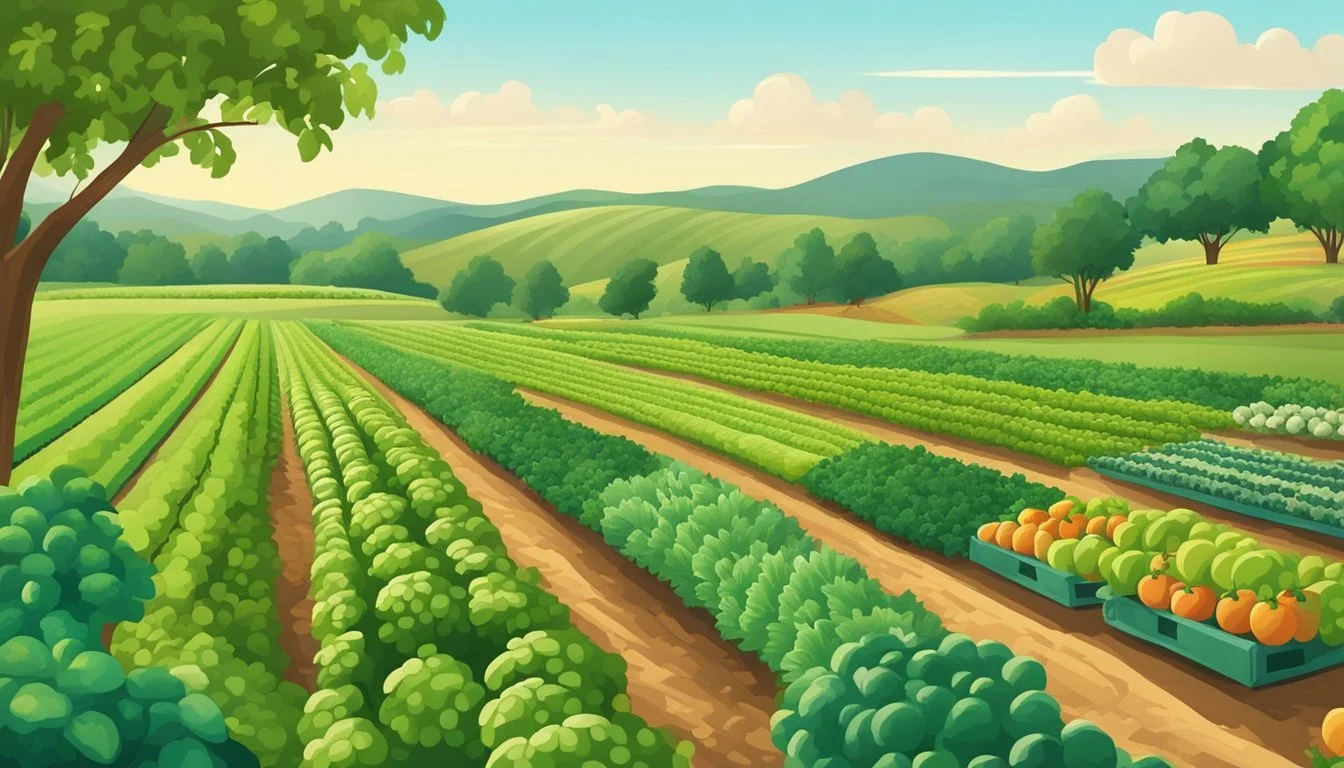Arkansas Seasonal Fruit & Vegetables in February
Your Guide to Fresh Produce
This Article is Part of our Arkansas Seasonal Fruit & Veg Calendar
February marks a time of transition in Arkansas, bridging the gap between the chill of winter and the promise of spring. In this month, gardeners and farmers in Arkansas take advantage of the cool yet gradually warming weather to plant and harvest a variety of produce that is hardy enough to withstand the tail end of the colder season. Seasonal eating ensures that even in February's shorter and colder days, residents and chefs have access to fresh, flavorful, and nutritious fruits (What wine goes well with fruit?) and vegetables. This focus on seasonality not only supports local agriculture but also provides ecological benefits by aligning consumption patterns with the natural growing cycles of the region.
Arkansas's February gardens are often found brimming with cool-season crops. The state's vegetable planting guide indicates that this period is well-suited for the cultivation of English and snap peas, which are among the most cold-hardy vegetables available. Additionally, a range of greens alongside the Cole family of vegetables, including broccoli and cabbage, begin to make their appearance. Root vegetables, such as carrots, also persevere through the cooler temperatures, making them a staple in the Arkansas winter diet.
Meanwhile, for fruit lovers, the produce calendar reveals that February is a month to enjoy what has been stored from previous months as well as to savor the citrus fruits that are still in season. Apples and pears, stored from fall harvests, mingle with the vibrant citrus varieties like grapefruit and oranges that are nearing their peak. This bounty supplies a hint of sweetness and a splash of color, offering a bright contrast to the typical winter palette of root vegetables and leafy greens.
Understanding Arkansas's Growing Seasons
Arkansas's climate offers diverse growing seasons throughout the year, favoring a range of fruits and vegetables. The state typically experiences four distinct seasons, with winters being relatively mild and summers warm and humid. This variability influences the state's planting calendar, as different crops thrive in transitioning temperatures.
During winter, which includes February, gardeners can capitalize on cool-season crops. The low temperatures enable the successful growth of plants that might struggle with the heat of an Arkansas summer. They may begin planting cool-hardy vegetables, such as English and snap peas, which can withstand cooler temperatures.
As for the rest of the year, here's a snapshot of what the seasons look like:
Winter (December to February): Plant cool-season crops early in the period; start seeds indoors for spring planting.
Spring (March to May): Transition period; time to plant summer crops after the last frost.
Summer (June to August): Peak growing season for heat-loving fruits and vegetables like tomatoes and melons.
Fall (September to November): Harvest summer crops early in the season; begin planting for autumn harvest and overwintering.
Gardeners should monitor the local frost dates, as Arkansas can have approximately 200 frost-free days, allowing for extended growing periods. Extending the harvest into different seasons depends on timely planting and keen awareness of local weather patterns. They should always be ready to adapt their practices to the specific regional conditions within the state.
Seasonal Fruits Available in February
February in Arkansas offers a variety of fruits that are ripe for the picking. Citrus fruits are particularly abundant during this time, while a selection of other fruits also reach their peak freshness.
Citrus Fruits
Arkansas's citrus offerings in February are diverse, with several types ripe for harvest:
Lemons: Tangy and versatile, lemons are in their prime season.
Blood Oranges: Known for their deep red flesh, they add a burst of color and flavor.
Grapefruits: These large, juicy citrus fruits are also ready to be enjoyed.
Berries and Tree Fruits
While berries are not typically in season during February, some tree fruits may still be available:
Apples: Stored from fall, apples can still be crisp and delicious if kept in proper conditions.
Winter Season Specials
February fruit selections may also include fruits stored from previous seasons or grown in controlled conditions:
Pears: Some varieties of pears may be available, having been stored to extend their seasonality.
Importance of Fruit Trees
Fruit trees in Arkansas undergo important care in February, including:
Pruning: Essential for tree health and to promote growth for the coming seasons.
Planting: For certain fruit trees, late winter is an ideal time to plant to ensure a fruitful harvest later in the year.
Farming and Harvest Calendar
The Arkansas vegetable planting calendar is instrumental in planning for fruit harvest:
Harvest: Growers refer to the calendar to determine the best times for harvesting remaining winter fruits and preparing for spring planting.
Seasonal Vegetables to Grow and Harvest
In February, Arkansas gardeners can expect to sow and reap a selection of cold-hardy vegetables. Crucial to success is planting vegetables that can thrive in the cooler temperatures of this month.
Root Vegetables
Carrots, beets, turnips, and radishes are well-adapted to the February chill. Carrots and beets should be planted in loose, well-draining soil to allow for proper root development.
Planting Depth:
Carrots: 1/4 inch
Beets: 1/2 inch
Turnips: 1/2 inch
Radishes: 1/4 inch
Cruciferous Vegetables
Cabbage, broccoli, and brussels sprouts are robust choices that can be started this month. They tend to require consistent moisture and benefit from the application of mulch to regulate soil temperature.
Fertilizer Needs: A balanced fertilizer is recommended during planting.
Spacing:
Cabbage: 15-18 inches
Broccoli: 18 inches
Brussels sprouts: 18-24 inches
Leafy Greens
For leafy vegetables such as kale, lettuce, and collards, Arkansas's February offers growing conditions that can prevent bolting, which is common in warmer months.
Sun Exposure: Most leafy greens prefer full sun but will tolerate partial shade.
Watering: Keep the soil consistently moist but not waterlogged.
Legumes and More
Peas and beans can be planted in February. They require a well-aerated, fertile soil and should be supported with a trellis or stakes as they grow.
Soil Temperature for Germination:
Peas: 40°F
Beans: 48°F–50°F
Gardening Tips for Vegetables
Gardeners should be wary of diseases and pests which can affect crops, practicing good rotation and sanitation. Utilizing a proper fertilizer strategy and adequate mulching can enhance growth and yield. For root vegetables, avoiding compacted soils is critical for development.
Mulch: Organic mulch can help retain moisture and control weeds.
Disease Prevention: Crop rotation and proper spacing can reduce disease risk.
Arkansas's Climate and Its Effect on Produce
Arkansas's climate is categorized as humid subtropical, which means that it generally experiences mild winters and hot, humid summers. This climate is conducive to a wide range of produce, as it allows for an extended growing season. However, the state's winter months, influenced by the colder northern air, can bring about chilly temperatures that may affect winter produce.
Winter Temperatures
During the winter, Arkansas can experience average low temperatures ranging from 20°F to 40°F. These cooler conditions necessitate careful planning for crops that can tolerate such colder weather. Typical winter produce includes hardy greens and some root vegetables that can either withstand or require cooler temperatures to thrive.
Rainfall and Its Implications
The state receives a notable amount of rainfall, averaging around 50 inches annually, with spring generally being the wettest season. The precipitation ensures adequate soil moisture levels which are critical for healthy crop growth but also poses challenges such as potential flooding or waterlogging which can harm the crops if not properly managed.
Regional Variability within the State
There is also regional variation within Arkansas that can affect growing conditions. The Highlands in the northwest have cooler temperatures, whereas the Lowlands in the southeast have milder winters. Farmers must adapt their crop selections and practices to these microclimates to optimize production.
Arkansas's climate directly influences which fruits and vegetables are seasonally available. Producers must be knowledgeable about the specific needs of each crop and how to manage the state's weather patterns to ensure bountiful harvests.
Where to Find Arkansas Seasonal Produce
Arkansas offers a variety of venues where consumers can acquire fresh, seasonal produce directly from the source. These options help connect the community with local growers, ensuring access to fruits and vegetables at their peak freshness.
Local Farmers' Markets
Farmers' markets are a mainstay for sourcing seasonal produce in Arkansas. They operate in numerous towns and cities, bringing a diverse assortment of goods directly from the farm to consumers. Shoppers at these markets can find an array of winter harvests, such as root vegetables and winter greens. Market schedules vary, so it's advisable to check local listings for hours of operation. Some prominent markets include:
Little Rock Farmers' Market
Fayetteville Farmers' Market
Jonesboro Farmers' Market
Community Supported Agriculture (CSA)
CSAs represent a partnership between local residents and farms, where consumers purchase a "share" of the harvest in advance. This system ensures that members receive a regular distribution of fresh produce throughout the farming season. Arkansas has several CSAs, which may offer seasonal selections in February like winter squashes and leafy greens. Participants typically pick up their shares at designated locations, and information on local CSAs can be found through resources like the Arkansas Department of Agriculture.
Retail Outlets and Groceries
For those seeking seasonal produce outside of market times, retail outlets and grocery stores are viable alternatives. These stores often source from Arkansas farms to provide seasonal items to their customers. While availability can depend on the store, many aim to support local agriculture by featuring Arkansas-grown produce. Consumers should look for signage or labels indicating that the products are locally grown to ensure they are purchasing Arkansas's seasonal offerings.
Health Benefits of Seasonal Eating
Consuming seasonal fruits and vegetables from Arkansas in February offers diverse and rich nutritional benefits. Fruits and vegetables harvested during their natural growing season contain higher levels of nutrients. For example, fiber content, crucial for digestive health, is often more abundant in fresh, seasonal produce.
Seasonal eating can enhance one's diet with a variety of fresh flavors. Fresh produce can be used in numerous dishes such as salads, soups, and stews, or even enjoyed roasted or sautéed. These cooking methods not only retain the nutritional integrity of the produce but also provide opportunities for healthier meal options. Consuming fruits and vegetables within their season ensures that individuals reap the maximum health benefits associated with these foods.
Here are some of the nutritional advantages:
Increased Nutrient Density: Seasonal produce tends to be fresher and, therefore, higher in vitamins and minerals.
Dietary Variety: Rotating fruits and vegetables with the seasons prevents a monotonous diet and encourages a wider intake of nutrients.
Flavor and Ripeness: Seasonally ripe produce is naturally more flavorful and enjoyable, encouraging healthier eating habits.
Embracing seasonal eating is not only good for one's health but also supports local agriculture and sustainable practices.
Preparing Seasonal Produce
When February arrives in Arkansas, residents have a rich palette of seasonal fruits and vegetables to incorporate into their cooking and preservation practices. With a focus on fresh produce, one can create delightful dishes that not only taste but also feel like a celebration of the season.
Cooking with Seasonal Vegetables
In February, chefs can maximize the flavors in their dishes by incorporating seasonal vegetables such as brassicas and root vegetables. These can form the backbone of heartwarming soups and stews, or be transformed into vibrant side dishes. Consider roasting to intensify their natural sweetness, or sautéing to keep the textures crisp and pleasing. For instance:
Root Vegetables: A mixed roast of carrots, parsnips, and potatoes, seasoned with rosemary and thyme.
Cruciferous Vegetables: Sautéed Brussels sprouts or cabbage can be a fresh complement to hearty meals.
Innovative Fruit Recipes
Arkansas's February fruit bounty, notably citrus, lends itself wonderfully to both savory and sweet recipes. One can infuse salads with segments of blood oranges or grapefruits for a zesty twist or create citrus-forward desserts that highlight their freshness. Some specific ideas involve:
Salad: A fresh kale and blood orange salad with a citrus vinaigrette.
Desserts: Lemon bars or grapefruit sorbet can offer a refreshing ending to any meal.
Preservation and Storage Techniques
Preserving the freshness of February fruits and vegetables is key to enjoying the local produce for longer periods. There’s a variety of preservation methods suitable such as canning, freezing, or pickling, which are perfect for keeping the flavors of the season at hand. Here’s how to handle the storage:
Can or Jam: Create jams from the local citrus, or can tomatoes for a burst of summer in colder months.
Storage: Keep root vegetables in a cool, dark place while citrus fruits stay best when refrigerated.
By embracing these seasonal items and applying the right preparation and preservation techniques, one can truly savor the richness of Arkansas’s February harvest.
Gardening and Maintenance Tips
February in Arkansas sees gardeners preparing their plots and fine-tuning practices essential for a healthy and productive season. The following subsections offer targeted advice designed to help maximize garden potential.
Planting and Pruning Guide
In February, Arkansas gardeners should focus on planting cool-season vegetables. Lettuce, for instance, is robust enough to grow even in frosty conditions.
Pruning should be undertaken with precision:
For flowering and fruiting plants, timing is critical to ensure proper blooming and yield.
Non-fruiting and non-flowering shrubs, like ornamental grasses and crape myrtles, should be pruned mid-February, while evergreens, such as liriope, can be cut back before new spring growth emerges.
Soil and Fertilizer Management
Soil preparation is crucial for a successful garden:
Apply mulch to maintain soil moisture and temperature.
Incorporate compost to improve soil structure and fertility.
Fertilizer application needs a strategic approach:
Use fertilizers appropriate to the specific plants in your garden.
Respect instructions regarding the quantity to avoid over-fertilization which can harm plants and the environment.
Pest and Disease Control in Gardens
Managing pests and diseases efficiently involves regular monitoring and intervention when necessary.
Pest control: Identify pests early and use targeted treatments.
Disease prevention: Maintain plant health through proper spacing and air circulation, which reduces the risk of disease.
Optimal Watering Practices
Appropriate watering is contingent upon the weather patterns and specific plant needs.
Ensure plants receive enough water, especially if rainfall is scant.
However, refrain from overwatering as it can lead to root rot and other issues.
Through these careful considerations in planting, pruning, soil, and pest management, Arkansas gardeners can set a solid foundation for the months to come.
Supporting Arkansas's Agricultural Economy
In the state of Arkansas, the agricultural economy thrives on a blend of crops, including seasonal fruits and vegetables. The local markets play a pivotal role in distributing fresh produce to consumers, supporting both the economy and the community's health. Arkansas's Department of Agriculture fosters this thriving sector by connecting producers and consumers through various programs and initiatives.
Local farms are the backbone of the state's agricultural output, employing a significant number of Arkansans. Purchasing produce from local markets ensures that money circulates within the state, bolstering the local economy. When shoppers choose to buy locally, they also help reduce transportation emissions, contributing to a healthier environment.
The economic impact is substantial. Agriculture contributes more than $19 billion to Arkansas's economy, making it a core component of the state's financial foundation.
Arkansas Seasonal Produce Availability in February:
Fruits: Limited due to the colder season, however, some stores may stock greenhouse-grown varieties.
Vegetables: Root vegetables and hearty winter greens are commonly available.
By prioritizing Arkansas-grown produce, consumers directly support the growth and sustainability of local farms and the broader agricultural sector. The Arkansas Department of Agriculture aids in this mission by providing valuable resources to ensure the availability of fresh, local foods in markets across the state, thus maintaining a robust agricultural economy.
Connect with Local Gardeners and Farmers
Engaging with local gardening and farming communities in Arkansas can provide invaluable insights into seasonal planting and harvesting. It can also aid in understanding which fruit and vegetables are best to grow in February.
Online Communities and Resources
Facebook Groups: Arkansas Gardening and Farming Community
This online platform allows gardeners and farmers in Arkansas to share tips, ask questions, and support one another.
Members frequently post about local events and opportunities to connect within the state.
Pinterest Boards: Arkansas Harvest and Planting Guides
Useful for visual inspiration and information about what to plant month-by-month.
Boards often feature resources connected to Arkansas's specific climate and soil conditions.
Gardening Clubs and Events
City-Based Gardening Clubs: Local gardening clubs in various cities of Arkansas, such as Little Rock Garden Club or Fayetteville Gardener's Association, offer regular meetings and share expertise in vegetable and fruit gardening relevant to the state's growing conditions.
State-Wide Gardening Events:
These events provide opportunities for gardeners to meet, learn from agricultural experts, and exchange seeds or produce.
They're often announced on community boards, Facebook pages, and through city municipality announcements.
Conclusion
In Arkansas, February serves as a pivotal month in the gardening calendar, marking the transition to planting cool-season vegetables. Gardeners can expect to sow seeds for a variety of crops suited to the colder temperatures of late winter.
Seasonal Vegetables:
Cool-season vegetables, such as spinach, lettuce, and radishes, can be planted in mid-February. These crops thrive in the cool weather, providing gardeners with fresh produce in the early spring.
Pruning Guidance:
Pruning becomes critical for plant health and productivity. Flowering and fruiting plants require pruning at appropriate times to ensure they flourish during their respective seasons. Non-fruiting and non-flowering plants often benefit from waiting until new growth in spring before pruning, especially if they have experienced winter damage.
Fruit Availability:
While February is not the peak time for fruit harvest in Arkansas, gardeners can look forward to the future harvests as the state supports a wide range of fruit trees and bushes. Planning for the seasons ahead, one can anticipate fresh berries, figs, and more as the year progresses.
Preparation for Spring:
Now is the time for Arkansas gardeners to prepare soil, organize their garden spaces, and lay the groundwork for a productive growing season. With proper planning and care, the fruits and vegetables planted in February will lead to bountiful harvests in the months to come.

